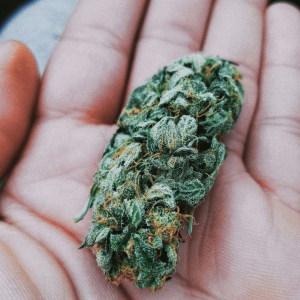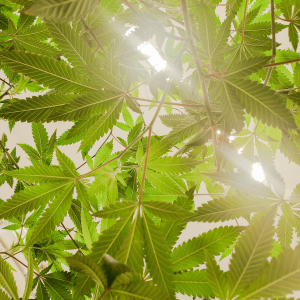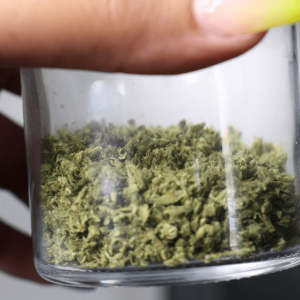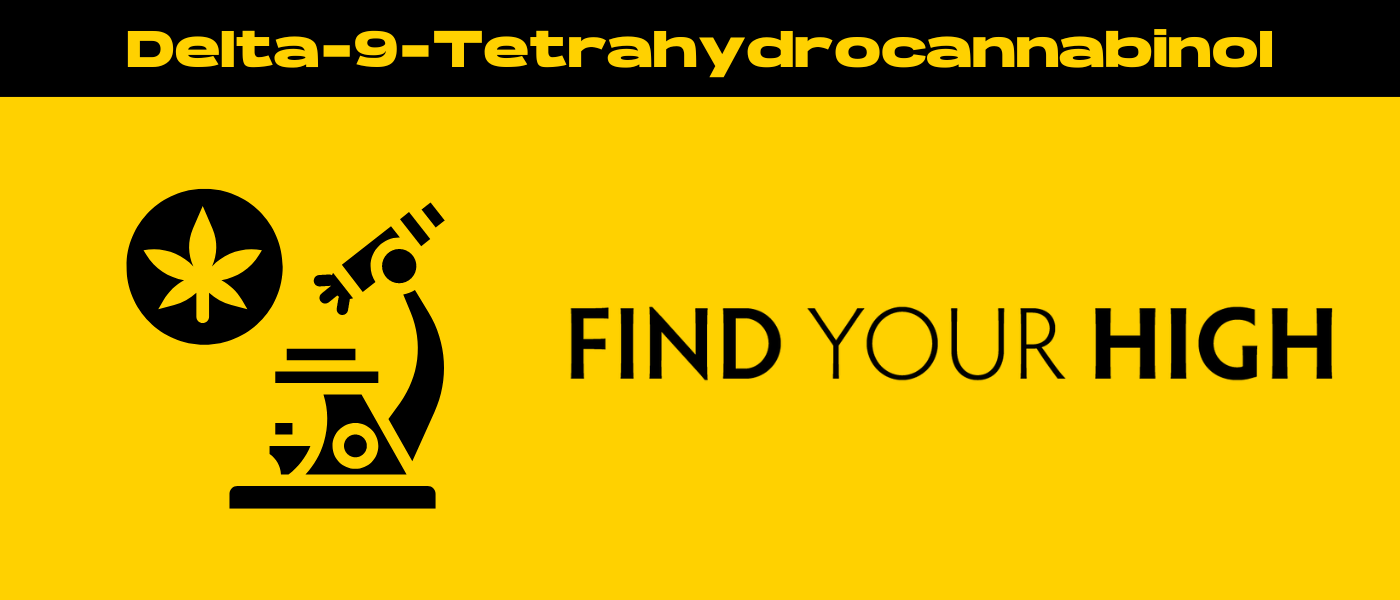Delta 9 Tetrahydrocannabinol (THC) is the primary psychoactive compound found in cannabis, responsible for producing the ‘high’ associated with marijuana use. This compound interacts with the body’s endocannabinoid system, influencing mood, appetite, memory, and pain sensation.
The discovery of THC dates back to 1964 when Dr. Raphael Mechoulam, an Israeli chemist, first isolated and synthesized it, marking the beginning of an extensive field of cannabis research.
Over the years, the legality of THC has been a subject of global debate, with laws varying significantly from one country to another. In some jurisdictions, THC is completely illegal, while in others, it is legal for medicinal use, and in certain places, it has been decriminalized or legalized even for recreational use.
This guide will explore the intricate aspects of Delta 9 Tetrahydrocannabinol, covering its effects on the human body, medical benefits, and potential risks. It will also provide an insight into the complex legal landscape surrounding THC, highlighting the contrast in regulations around the world.
Additionally, the guide will discuss recent research findings and the future prospects of THC in medical science and legal frameworks. Whether you’re a medical professional, a patient considering medical cannabis, or simply a stoner curious about THC, this in-depth guide will provide a comprehensive understanding of Delta 9 Tetrahydrocannabinol.
What is THC?
THC, or Delta 9 Tetrahydrocannabinol, stands as the most recognized compound within the cannabis plant, primarily known for its psychoactive attributes that result in the distinctive ‘high’ many users seek.
Beyond its recreational appeal, THC interacts intricately with the human endocannabinoid system, a complex network that plays a key role in regulating a variety of physiological processes including mood, memory, appetite, and pain management.
This interaction triggers a cascade of neurotransmitters, altering perceptions, enhancing sensory experiences, and, in some cases, providing relief from chronic pain and anxiety.
It’s this profound impact on the human body and mind that has propelled THC to the forefront of medical cannabis research, exploring its potential in treating a myriad of conditions.

THC and the Human Body
THC and its interaction with the human body represent a complex and fascinating subject, bridging the worlds of neurochemistry and human experience.
This section will explain how THC interacts with the body’s endocannabinoid system to produce its effects, which include changing consciousness and offering relief from pain and nausea.
The Endocannabinoid System Explained
The endocannabinoid system (ECS) is a complex biological system present in all vertebrates, playing a crucial role in regulating a range of physiological and cognitive processes including mood, memory, appetite, and pain sensation.
It comprises cannabinoid receptors found throughout the body, endogenous cannabinoids (endocannabinoids) that interact with these receptors, and enzymes that help break down cannabinoids.
The ECS helps maintain bodily homeostasis, ensuring that the internal environment remains stable despite external changes.
How THC Interacts with the Brain
THC interacts with the body primarily by binding to cannabinoid receptors in the brain and throughout the nervous system.
The most notable receptors in this interaction are CB1 and CB2. THC’s affinity for the CB1 receptor, which is predominantly located in the brain, is what leads to the psychoactive effects associated with marijuana use.
When THC activates these receptors, it can alter mood, consciousness, perception, and emotional responses, resulting in the ‘high’ sensation.
Physical and Psychological Effects of THC
The effects of THC on the human body can vary widely among individuals, depending on factors like dosage, method of consumption, and the user’s tolerance level. Physically, THC can induce relaxation, pain relief, and, in some cases, increased appetite. However, it can also lead to less desirable effects such as dry mouth, red eyes, and impaired motor skills.
Psychologically, THC can create feelings of euphoria, heightened sensory perception, and increased sociability. In contrast, some individuals may experience negative effects such as anxiety, paranoia, and short-term memory impairment. These psychological effects are typically short-lived but can vary greatly depending on the individual’s psychological state and the environment in which THC is consumed.
Medical Uses of THC
Delta 9 Tetrahydrocannabinol (THC), or medical marijuana, has garnered significant interest in the medical community for its potential therapeutic benefits without the use of potentially harmful chemicals.
A growing body of research suggests that THC can be an effective treatment for various conditions, offering relief where traditional medications may fall short. In fact, THC has been studied for its efficacy in treating a wide range of medical conditions.
It is most commonly associated with providing pain relief, especially in chronic conditions such as neuropathic pain. Beyond pain management, THC is also used to alleviate symptoms in patients undergoing chemotherapy, such as chemotherapy-induced nausea and vomiting, and to boost appetite in individuals with wasting syndromes like HIV/AIDS.
Other areas where THC shows promise include the treatment of muscle spasticity in multiple sclerosis, sleep disorders, and reducing intraocular pressure in glaucoma.
Benefits of THC in Pain Management
A significant area of THC research has focused on pain management, where it has been found to act on the endocannabinoid system to provide analgesic effects.
Studies have shown that THC can significantly reduce chronic pain symptoms, making it a valuable alternative for individuals who have not found relief through conventional painkillers.
Its ability to interact with pain receptors in the brain alters the pain perception pathway, offering real relief to sufferers of conditions like fibromyalgia, rheumatoid arthritis, and endometriosis.
THC’s Role in Managing Chemotherapy Side Effects
One of THC’s most well-documented medical uses is in managing the side effects of chemotherapy. THC has been proven effective in reducing nausea and vomiting associated with chemotherapy treatments, a benefit that can significantly improve the quality of life for cancer patients.
Additionally, THC’s appetite-stimulating properties have helped combat cancer-related cachexia, enabling patients to maintain their body weight and withstand the rigors of chemotherapy with better overall health outcomes.

Recreational Use of THC
The use of THC for fun has sparked a lot of debate lately, with people’s views changing quite a bit. THC stands out because it can make you feel euphoric, relaxed, and heighten your senses in a way that’s different from the buzz you get from drinking alcohol or the boost from caffeine. But it’s not without its issues.
While it’s argued that THC is less addictive and has a lower risk of overdose compared to other substances, its legality is still a big question. Many states are trying to figure out the best way to handle its sale and use, balancing the health risks with people’s rights.
The changing laws around THC show how society is slowly but surely starting to see it in a new light, with more areas easing up on restrictions for on recreational use.
Cultivation and Production of THC
The process of cultivating cannabis and producing THC is both an art and a science, requiring detailed knowledge of plant genetics, growth conditions, and extraction techniques.
Cannabis cultivation can vary dramatically, from outdoor farms harnessing natural sunlight to sophisticated indoor operations using artificial lighting and climate control systems. These methods directly influence the potency and quality of the harvested cannabis, including its THC content.
Additionally, the extraction of THC from cannabis plants has become a highly specialized field, with methods ranging from simple solvent-based extraction to more advanced techniques like supercritical CO2 extraction, which can isolate pure THC and other cannabinoids with high efficiency.
Understanding the science behind THC potency involves a thorough grasp of cannabis genetics and breeding techniques. Selective breeding of cannabis strains has led to the development of varieties with exceptionally high THC levels, catering to both medical users seeking specific therapeutic effects and recreational users desiring a more intense experience.
Indica Cannabis Plants
Indica cannabis plants are characterized by their short and bushy stature, making them well-suited for indoor cultivation. These plants typically have broad leaves and grow faster than their Sativa counterparts, with a shorter flowering cycle.
Indicas are known for producing effects that are more relaxing and sedating, often described as a “body high.” This makes them a preferred choice for users seeking relief from insomnia, pain, and muscle spasms.
The high THC content in Indica strains can also significantly increase appetite, making it beneficial for patients dealing with conditions like anorexia or the side effects of chemotherapy.
Cannabis Sativa Plant
Sativa cannabis plants are taller and slimmer compared to Indica plants, with narrow leaves and a longer flowering time. They thrive in warm climates with a lot of sunlight.
Sativas are associated with a cerebral high, offering stimulating and energizing effects, which make them ideal for daytime use.
Users often turn to Sativa strains for their reported ability to enhance creativity, focus, and serotonin levels, potentially helping with conditions like depression and ADHD. Sativas are also said to help with chronic pain and nausea.
Hybrid Cannabis Plants
Hybrid cannabis plants are bred from a combination of Indica and Sativa strains, aiming to produce a blend of effects that can cater to specific user needs. These plants vary in their appearance, growth characteristics, and flowering times, depending on their genetic lineage.
Hybrids offer a middle ground between the body relaxation of Indicas and the mental uplift of Sativas. The versatility of hybrid strains allows users to target specific issues more effectively, such as anxiety, without the heavy sedation or overstimulation that pure strains might induce.
With hybrids, growers and consumers can enjoy the best of both worlds, tailored to their personal preferences and therapeutic needs.

The Role of Terpenes in THC
Terpenes play a crucial role in enhancing and modulating the effects of THC in cannabis. Beyond contributing to the plant’s unique aroma and flavor profile, these volatile compounds significantly influence the therapeutic and recreational effects of cannabis.
Research indicates that terpenes work synergistically with THC and other cannabinoids in what’s known as the entourage effect, potentially amplifying benefits such as pain relief, mood enhancement, and anti-inflammatory properties. This interaction suggests that the overall impact of cannabis cannot solely be attributed to its THC content; the terpene profile of the plant also plays a significant role.
Understanding the interactions between terpenes and THC is vital for both medical users seeking specific effects and recreational users looking for a particular experience.
How to Consume THC
There are numerous ways to consume THC, each with its own set of effects, onset times, and duration.
The most traditional method is smoked cannabis flower, which allows for rapid absorption of THC into the bloodstream, resulting in immediate effects. Vaping, a less harsh alternative to smoking, heats the cannabis without combustion, reducing the inhalation of toxic byproducts.
Edibles, another popular choice, offer a longer-lasting and potentially more intense experience, as THC is metabolized in the liver into a more potent compound.
Tinctures and oils can be used sublingually (under the tongue) for a faster onset than edibles but longer duration than smoking or vaping. Topicals, such as creams and balms, utilize cannabis sativa extracts and are applied directly to the skin for localized relief without psychoactive effects.
Choosing the right consumption method depends on the individual’s needs, preferences, and tolerance level.

What Terpenes Are Found in Cannabis Plants?
Several terpenes are found in cannabis plants, each with unique effects and aromas:
- Myrcene: Often the most abundant terpene in cannabis, it produces earthy, musky notes reminiscent of cloves. Myrcene is known for its relaxing properties and is thought to enhance THC’s psychoactive effects.
- Limonene: This terpene gives off a citrus scent and is believed to provide mood elevation and stress relief. It may also have anti-fungal and anti-bacterial properties.
- Caryophyllene: With a spicy, peppery aroma, caryophyllene is unique because it can also interact with the body’s endocannabinoid system, potentially reducing inflammation and offering pain relief.
- Linalool: Known for its floral, lavender scent, linalool is thought to promote relaxation and calmness, making it beneficial for anxiety and stress relief.
- Pinene: True to its name, pinene smells like pine trees and is thought to offer effects such as increased alertness, memory retention, and counteracting some THC effects like short-term memory loss.
- Humulene: It gives off earthy, woody aromas and is believed to have anti-inflammatory properties.
- Terpinolene: With a complex scent of pine, floral, herb, and occasionally citrus, terpinolene is considered to offer mildly sedative effects, making it beneficial for relaxation.
Each of these terpenes contributes to the unique profile of cannabis strains, influencing their therapeutic effects, flavors, and scents. Ultimately, delta 9 tetrahydrocannabinol, terpenes, and other cannabinoids work together to create the magic that is cannabis.
Legal Status of THC Worldwide
The legal status of THC varies significantly across the globe, creating a complex landscape for both consumers and regulators.
In the United States, the legalization of THC and cannabis has been a state-by-state process. While some states have fully legalized cannabis for both medical and recreational use, others have only legalized it for medical purposes, and a few maintain total prohibition. This patchwork of legalization reflects the ongoing debate regarding cannabis within the country.
Internationally, the legal landscape for THC and cannabis is even more diversified. Countries like Canada and Uruguay have led the way in full legalization for recreational use, setting precedents for others to follow. In contrast, many European, Asian, and Middle Eastern countries uphold strict laws against the possession, sale, and use of cannabis, with severe penalties for violations.
The impact of THC and cannabis legalization on societies has been a subject of much research and debate. Proponents argue that legalization leads to reduced crime rates, especially in terms of drug-related offenses, and undermines the black market and organized crime.
There’s also evidence suggesting that access to regulated cannabis leads to improved health outcomes for individuals, including reduced opioid overdose rates in areas with legal access to cannabis. However, concerns remain about the potential for increased THC consumption to lead to public health issues, including increased rates of addiction and mental health problems in vulnerable populations or those prone to substance abuse.
Overall, the movement towards legalization in various parts of the world suggests a shift in societal attitudes towards cannabis and THC. Yet, the global legal landscape remains a patchwork, reflecting diverse cultural attitudes, economic considerations, and regulatory frameworks.
THC and Public Health
Ongoing research and debates continue among scientists, policymakers, and the public about the long-term health effects of THC.
While studies highlight cannabis’s therapeutic benefits for chronic pain, epilepsy, and glaucoma, prolonged use of THC-rich products carries risks. Heavy or long-term THC use can lead to mental health problems, including a higher chance of psychiatric disorders like schizophrenia in those already at risk.
There’s also evidence that consistent use might result in THC addiction and marijuana dependence, challenging the belief that cannabis is completely safe and non-addictive.
The conversation on THC addiction and dependency recognizes that while most cannabis users won’t experience dependency issues, some struggle with controlling their use, impacting their personal, social, and work lives. This level of dependency could also lead to cannabis withdrawal symptoms.
Thus, public health policies on THC use must find a middle ground between allowing access to cannabis for therapeutic and recreational use and preventing potential abuse and harm.
As a response, public health policies around the world are adapting, focusing more on regulation, education, and harm reduction. Efforts to limit THC levels, enforce strict labeling and quality controls, and educate the public on the dangers of overuse are being rolled out in areas where cannabis is legal. These measures aim to reduce THC-related risks while leveraging its benefits, showing a careful and knowledgeable stance towards cannabis regulation.

Controversies and Debates Surrounding THC
The discussion about THC and its medical and recreational use is full of controversy and debate. It’s a complex issue that touches on medicine, law, and public opinion, leading to diverse and often conflicting views on THC’s place in society.
Though, if you ask us, it shouldn’t be as complex as it is. After all, it is a plant… but we digress.
Medical Community’s Stance on THC as a Treatment
The medical community remains divided over THC’s acceptance as a treatment option.
While many researchers champion cannabis for its potential in treating a wide range of conditions, including chronic pain, epilepsy, and PTSD, others caution against potential risks. Concerns over the long-term impact of THC use, particularly regarding mental health and dependency, highlight the need for further research and clinical trials to understand cannabis’s benefits and limitations better.
Legal Controversies Surrounding THC Use and Cannabis
Legally, the landscape surrounding THC is complex and often contradictory. Despite a growing trend towards legalization, controversies arise over regulation, such as setting age limits, determining safe consumption levels, and enforcing driving under the influence of cannabis laws.
The disparity in laws from one region to another complicates legal standings, often putting users in difficult positions regarding legality and leading to ongoing debates about federal versus state rights.
Public Opinion and Media Portrayal of THC
Public opinion on THC and cannabis use has shifted significantly over the years, largely influenced by media portrayal and evolving cultural attitudes. While there is growing support for legalization and recognition of cannabis’s therapeutic effects, stigma and stereotypes persist.
Media portrayals fluctuate between demonizing THC and glorifying cannabis culture, contributing to a polarized public view. This contrast influences political discourse, legislative efforts, and societal attitudes toward THC, cannabis users, and the industry at large.
These ongoing controversies and debates reflect the complex nature of THC’s role in society, underscoring the importance of informed discussions, comprehensive research, and cautious optimism as we navigate the future of cannabis policy and use.
The Future of THC: Emerging Research and Trends
New research into THC and other cannabinoids like Delta-8 THC, THCa, and CBD is revealing more possible medical benefits, broadening our grasp of what THC can do therapeutically.
Researchers are looking into how THC might treat illnesses not typically linked with cannabis, like autoimmune diseases, Alzheimer’s, and some cancers, with encouraging early findings. This growing area of study highlights THC’s potential to make a big impact in medical science, not just in treating pain and nausea but beyond.
Parallel to the scientific exploration, legalization trends across the globe are reshaping the cultural, economic, and regulatory landscapes. These trends not only increase access to THC for therapeutic use but also challenge long-standing legal and social norms regarding drug consumption.
The potential impacts of widespread legalization include shifts in criminal justice priorities, new economic opportunities in the cannabis industry, and changing social attitudes toward cannabis use.
However, the path forward is not without its challenges, as policymakers, healthcare providers, and communities grapple with finding a balance between harnessing the benefits of THC and mitigating risks associated with its abuse.
The future of THC, both as a component of the cannabis plant and as a subject of scientific and social significance, is poised at a crossroads of potential. As research advances and societal attitudes evolve, the possibilities for new medical applications and broader acceptance of THC’s role in medicine and culture continue to grow, setting the stage for a dynamic and ongoing reevaluation of cannabis within the global landscape.

Conclusion
Summarizing the key points about THC, it’s clear that we’re at a significant moment in its history. Society’s views on THC are evolving, showing a trend toward accepting and recognizing the potential benefits of cannabis, while also being mindful of its risks.
Public opinion has changed a lot in recent years, influenced by how media, culture, and scientific research portray THC. This research points out both the possible therapeutic uses and the challenges of using THC.
Looking ahead, research and legalization efforts concerning THC will keep influencing both medicine and society. Scientists are exploring THC’s ability to treat various conditions, including autoimmune diseases and some cancers, with a mix of optimism and caution.
At the same time, legalization movements around the world are leading to a rethinking of the laws, economics, and social norms around cannabis use.
Finding the right balance between taking advantage of THC’s benefits and reducing the risks of its misuse is a major challenge for lawmakers, healthcare professionals, and society at large.
The future of Delta 9 Tetrahydrocannabinol (THC) involves a careful balance between advancing our knowledge through solid research and dealing with the complex social, legal, and ethical issues that come with its wider acceptance and use.
Frequently Asked Questions
1. Will delta-9 give you a high?
Yes, delta-9 tetrahydrocannabinol (THC) is the primary psychoactive component of cannabis and is responsible for the high that users experience. Its effects can vary based on the dose, the user’s physiology, and the method of consumption.
2. What is Delta 9 tetrahydrocannabinol used for?
Delta 9 tetrahydrocannabinol is used both recreationally and medicinally. Medicinally, it has been found to relieve pain, nausea, and vomiting in cancer patients undergoing chemotherapy and to stimulate appetite in individuals with conditions such as AIDS. It’s also being researched for its potential to treat a variety of other medical conditions.
3. How does Delta 9 tetrahydrocannabinol affect the body?
Delta 9 THC interacts with the body’s endocannabinoid system, a complex network of receptors located throughout the brain and body. It binds to receptors in the brain and can affect mood, memory, pain sensitivity, appetite, and cognition. The effects can include euphoria, relaxation, changes in perception, altered time sense, and increased appetite.
4. What kind of high is delta-9?
The high from delta-9 THC is often described as both cerebral and physical, influencing thoughts, emotions, and physical sensations. Users may experience euphoria, relaxation, heightened sensory perception, laughter, altered sense of time, and in some cases, anxiety or paranoia. The specific nature of the high can vary widely depending on the strain of cannabis, the individual’s physiology, and the amount consumed.

 Rewards
Rewards




